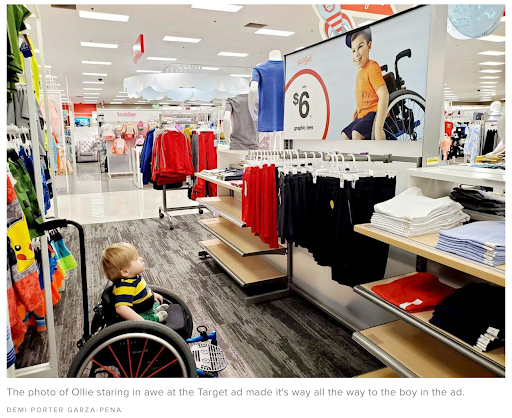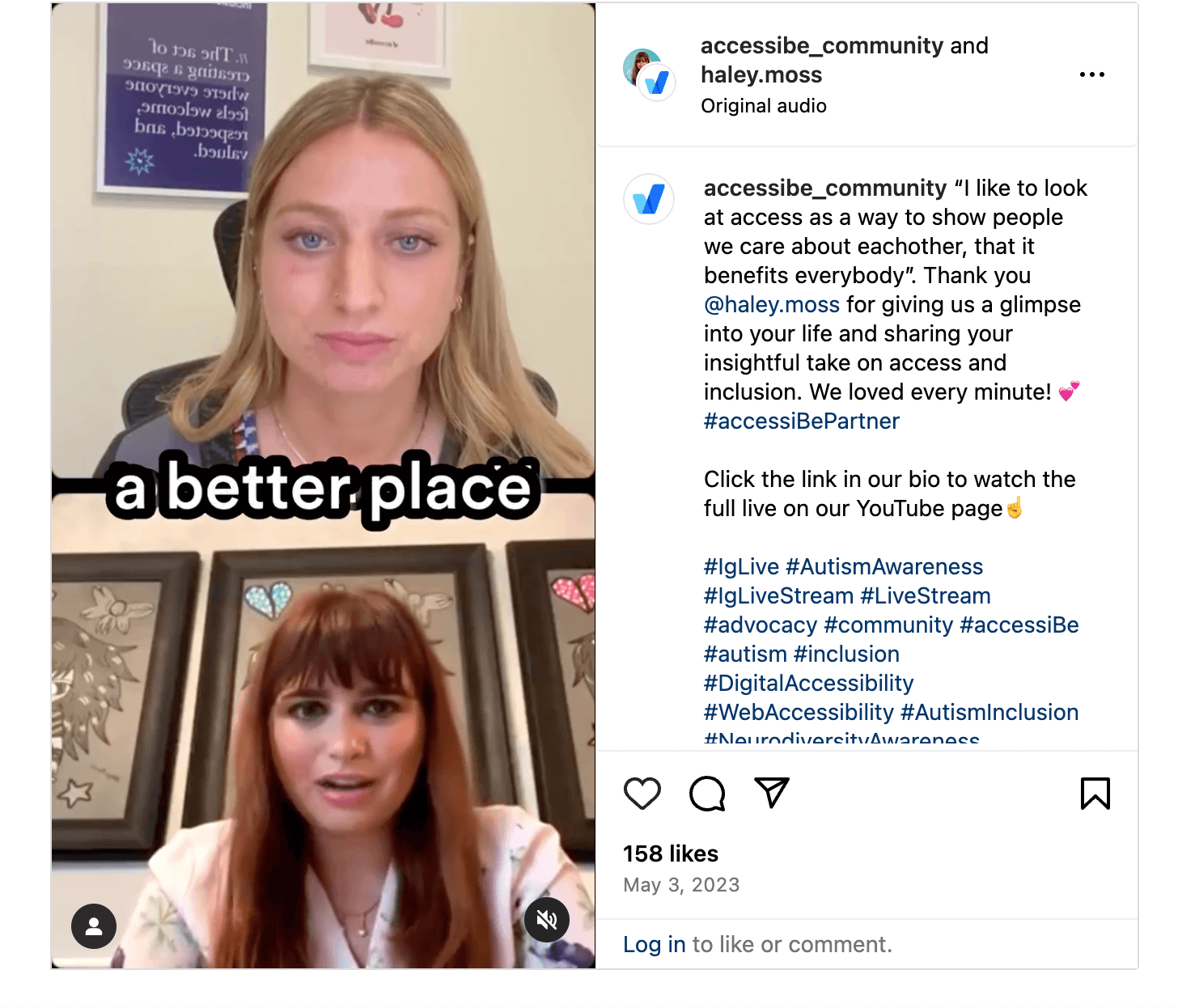Disability-inclusive marketing means representing people with disabilities in your marketing materials. It also means making sure that your marketing materials are accessible, from your videos and images to your website, social media presence, and ad campaigns. Not only do accessible materials ensure that people with disabilities can access them, but it also positions your brand as inclusive of all different types of people and diverse in your representation. In general, inclusive marketing is a great business decision. It helps you expand your audience reach and strengthen your relationship with your customer base. Here’s why and how to do it.
Diverse representation is good for business
Representing members from the disability communities in marketing ads and campaigns appeals to the 57% of consumers who remain loyal to brands that address social inequities. Disability-inclusive marketing aligns with inclusive values and can show your consumers that it’s important to your brand to break down misconceptions about people with disabilities. In reality, people with disabilities shop for the same new items that hit the market just as everyone else does. Representation illustrates that (see image below).

Unfortunately, disability-inclusive marketing is currently not commonly practiced. In a recent Nielsen analysis, approximately 450,000 ads on broadcast and cable TV were analyzed and only 1% of those ads represented people with disabilities.
Are you ready to become a pioneer in disability representation? Let’s get started.
#1: Team up with influencers with disabilities
Including people with disabilities in your marketing assets is an accurate depiction of the 16% of the global population that lives with a disability. As we said earlier, people with disabilities are no different than the average consumer. They shop for clothes, purchase electronics, and want to stay updated on sales and events. This truth has been demonstrated by the many successful social media influencers with disabilities that we’ve all come to love across multiple platforms.
71% of marketers believe that partnering with influencers is good for business because they’ve seen the impact that long-term collaboration has on their brand’s online campaigns. With disability-inclusive marketing, you’re taking that extra step by working with influencers with disabilities who can catapult your social media or ad campaign to success.
You can collaborate to give an influencer a shoutout, have one join you on Lives, create reels together, or launch a giveaway. You can even the real, honest stories of these influencers with disabilities and highlight their achievements, experiences, and contributions to the world. Partnerships are a great way to prove your brand’s commitment to a disability community by taking real action with someone respected within the community.

Partnering with influencers in ads and campaigns also amplifies disability voices and contributes to more inclusive communities online. These collaborations also open your doors to consumers with disabilities, encouraging them to check out your brand, and leading to higher social followers and engagement stats for you.
#2: Reflect intersectionality from the disability communities
People with disabilities aren’t defined by the disability they have. They have multi-dimensional identities, including race, gender, age, and ethnicity.
For example, it’s not widely known that 18% of American Indians and Alaska Natives report having a disability, according to the Census Bureau’s 2021 American Community Survey (ACS). And, the same survey finds that 14% of black Americans report living with a disability, as well.
Keep this in mind when selecting models and influencers for your marketing ads and campaigns. For example, featuring a black person who uses a wheelchair does not “check the same box” as featuring a senior citizen who lives with a disability, considering that 24% of people aged 65 to 74 report having a disability.
Make sure to expand your casting calls and outreach to people of all different backgrounds and from multiple disability communities. In your campaigns, visuals, and other marketing materials, remember to use proper language transitions, and historical context, and be sensitive to cultural nuance. The goal is to create an ad campaign or showcase diversity on your website with intersectionality in mind to break down stereotypes and challenge traditional narratives surrounding disability demographics.
#3: If it’s not accessible, it’s not inclusive
69% of marketers know that successful marketing campaigns include accessible marketing material. That means ensuring every image, video, email, and website is accessible in design and content. If people with disabilities can’t see, hear, or understand that their community is represented in a marketing strategy or a campaign, then you aren’t successfully practicing inclusive marketing.
Always include the following in marketing materials:
- Alt text embedded in all images
- Captions or subtitles on videos
- Transcripts for audio ads
- Inclusive language in the copy
- Proper color contrast in designs
Inclusive marketing is marketing for everyone
Disability-inclusive marketing is transforming the advertising, social media, and multimedia landscapes. It provides great business benefits, like a wider audience reach and an inclusive brand reputation. Disability representation matters and it’s up to you to implement the marketing strategies and activities that empower the voices of the disability communities and make your brand more inclusive.
